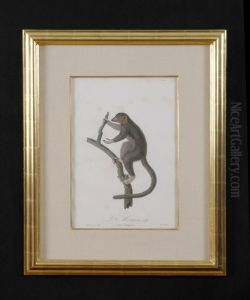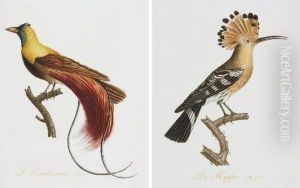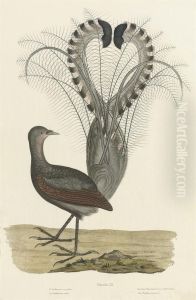Jean-Baptiste Audebert Paintings
Jean-Baptiste Audebert was an 18th-century French artist known for his natural history illustrations, particularly of birds and primates. Born on January 11, 1759, in Rochefort, a small coastal town in southwestern France, Audebert displayed an early interest in painting and nature. However, there is little documentation of his early life and training.
Audebert's talents became more widely recognized in Paris, where he moved to pursue his career as an artist. He developed a unique method of printing in color, which involved the use of multiple plates and careful inking to achieve a rich, nuanced palette. This technique was particularly well-suited to natural history illustration, where accurate color representation is crucial.
Despite his artistic skills, Audebert did not initially work in the field of natural history. His entry into this discipline came somewhat serendipitously when he was commissioned to illustrate a collection of exotic birds. The project, which resulted in the publication of 'Histoire Naturelle des Oiseaux Dorés' (Natural History of Gilded Birds) between 1800 and 1802, was groundbreaking in its scientific accuracy and artistic quality.
Audebert went on to produce another significant work, 'Histoire Naturelle des Singes et des Makis' (Natural History of Monkeys and Lemurs), which he both wrote and illustrated. This two-volume set, published posthumously in 1804, was noted for its meticulous detail and lifelike portrayals of its subjects.
Unfortunately, Audebert's career was cut short by his untimely death on December 4, 1800, in Paris, at the age of 41. Although his body of work was not large, his contribution to scientific illustration was significant. His attention to detail, combined with his innovative printing techniques, set new standards for the field and influenced future generations of natural history artists.


